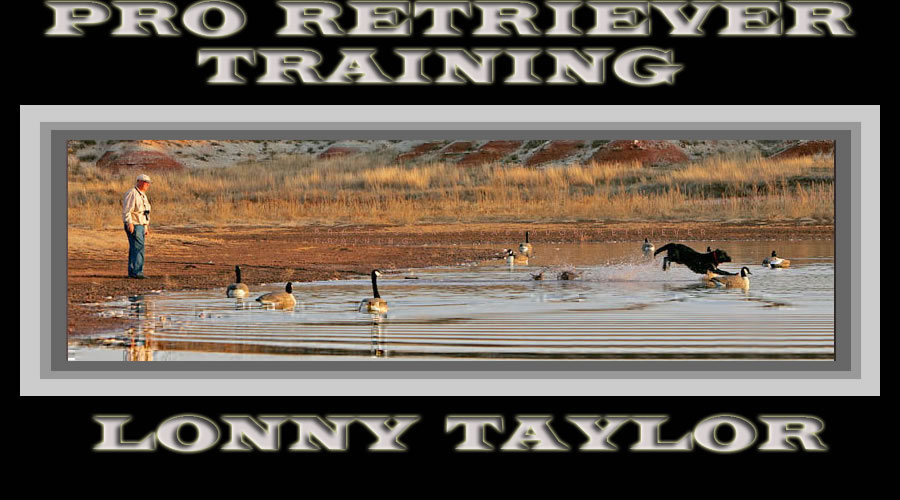Home
Labrador Retriever Training Lonny's Achievements Taylor Made Programs Lonny's Training Philosophy Started Gun Dogs Puppies For Sale Contact Us Articles A Finished Gun Dog Dog Training Definitions Hunt Test Information Choosing A Puppy Labrador Retriever Training Tips The Value Of A Trained Retriever Pro-Retriever Trainer Slide Show |
WHAT IS A FINISHED GUN DOG?“A finished gun dog is a solid citizen, a well-trained gun dog that can handle blind retrieves over water and land, and is a great family companion,” says Dave Alvarez, a long-time upland bird and waterfowl guide and a gun dog broker. “There aren’t many of those around.” Pro retriever trainer Lonny Taylor of Taylor Made Retrievers takes it one step farther. “A finished gun dog is a dog with an AKC Master Hunter title,” says Lonny Taylor. “Because a Master Hunter dog has proven in competition that he or she has the training, discipline, and ability to excel in all hunting situations.” Many hunters are happy with a dog that flushes upland birds such as pheasant and grouse, finds shot birds, and retrieves them to somewhere near the gunner. In the duck blind, the dog has to mark where shot birds have fallen and bring them back to the blind. While they may be effective at their jobs through instinct and experience, these are not finished gun dogs. Experienced hunters have all seen guys who are constantly making excuses about their dogs. The dogs chomp holes into dead birds; drop birds ten feet from the blind; bark, yap, and whine, spooking incoming waterfowl; fight other dogs for retrieves; bolt whenever guns are fired; disappear in the field, chasing all the pheasants or quail out of the cover before gunners can get in position; and yes, eating birds. Worst of all is when someone brings an untrained pup into the field, blasting shotguns over its head, and possibly ruining his hunting career before he even knows what a bird is. In one fell swoop, they teach a pup that birds are really scary and guns are awful and hunting is no fun at all. It’s no fun to hunt with untrained dogs causing mayhem and chaos. In fact, it can be dangerous. Here are the attributes of a finished gun dog, as defined by the AKC dog who has won a Master Hunter title. A Master Hunter must:
In contrast to the mayhem and chaos of hunting over poorly trained or spoiled dogs, hunting over a finished gun dog is a pleasant experience. The dog is an eager, willing, well-trained hunting companion who makes the overall experience much better than it would be without his presence. Imagine this scenario: You and your buddy are jump-shooting over an icy river. You flush a flock of ducks and geese. At the flush, your dog sits, rooted to the spot, his eyes marking and his brain recording everything that happens. You bag a double on mallards, which fall into the icy water. Your buddy shoots a goose that manages to sail 100 yards before collapsing in the marsh on the other side of the river. You line your dog up on the duck farthest down the river, call his name, and he explodes into the water. He locates the duck and brings it to hand, releasing it when you say “Give”. You line him up on the next bird, and again, he locates and retrieves the bird to hand. You line the dog up on the location where you saw the goose fall and send the dog. He swims the river again and charges into the cattails on the other side. He’s gone a long time, and you’re worried that he may not find the bird. Sure enough, however, here comes your trusty companion with a large Canada goose in his mouth. As your dog re-enters the water, a pair of ducks swing low over the river. You and your buddy stand and take them, and your dog marks where the birds fall as he’s swimming across the river…now that’s a fun hunt. When you have a dog like this, you’ll never worry about getting invitations to hunt choice spots. A finished gun dog is a sure-fire hunting companion that will make your hunts even more memorable than you imagined, and owning a finished retriever should be every bird hunter’s goal. |
EditRegion2 |
